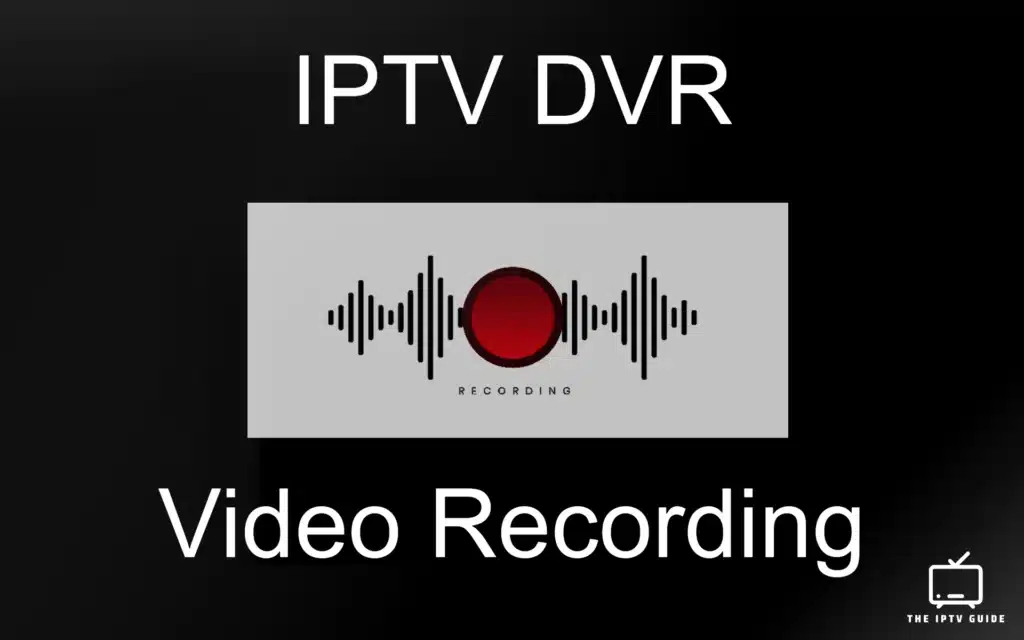
Introduction
In today’s fast-paced world, missing your favorite TV shows or live events can be a real letdown. Thankfully, IPTV (Internet Protocol Television) with DVR (Digital Video Recorder) capabilities is here to save the day.
This powerful combination allows you to record live TV and watch it at your convenience. In this guide, we’ll walk you through everything you need to know about IPTV DVR, including what it is, how it works, and how you can set it up to ensure you never miss a moment of your favourite content.
What’s IPTV DVR?
IPTV stands for Internet Protocol Television, which means television content delivered over the internet rather than through traditional satellite or cable formats. IPTV offers a wide range of live TV channels, on-demand videos, and even interactive features.
DVR, or Digital Video Recorder, is a technology that allows you to record live TV broadcasts and store them for later viewing.
When combined, IPTV with DVR allows users to record live TV shows, sports events, movies, and more. This means you can watch your favourite programs whenever you want, pause and rewind live TV, and even schedule recordings in advance. It’s like having your own personal TV service that fits your schedule.
How to use IPTV with DVR
Setting up IPTV with DVR might sound complicated, but it’s quite straightforward, especially with certain IPTV services that offer DVR out of the box. – Below are two ways you can configure IPTV DVR.
Plug-and-play IPTV DVR (TV Playback)
Most IPTV providers have a feature known most commonly as ‘TV playback’ (note: make sure your IPTV player supports this feature), what this feature gives you is ~3-7 days worth of recorded content throughout all the channels without the need for additional hardware.
Advantages:
- Ease of Use: No need to set up additional hardware or software.
- Automatic Recording: Content is automatically recorded and available for a set period.
- Convenience: No need to manually schedule recordings.
Limitations:
- Temporary Storage: Recordings are only available for a limited time (3-7 days).
- No Permanent Storage: You can’t keep recordings indefinitely.
The down-side to using the recordings is that you can’t keep the recording forever as stated above, although it does makes your life much easier, especially since you don’t have to set-up any DVR devices or press any buttons.
If that sounds good, and does the job for you, we have a few IPTV providers or IPTV services that support TV Playback (DVR) in our list of IPTV providers or choose a 5 star IPTV service from below.


Hardware-Based IPTV DVR
If you want more control over your recordings, including the ability to keep them permanently, you can use hardware-based IPTV DVR solutions. Devices like MAG IPTV players, Enigma2 boxes, or standalone DVR devices can offer more robust recording features.
Using MAG IPTV Players with DVR

MAG IPTV boxes are popular devices that support IPTV services and can often be configured to use DVR functionalities.
Steps to Set Up Hardware-Based IPTV DVR:
- Choose a Compatible Device: Ensure your IPTV player, such as a MAG box, supports DVR functionality.
- Connect Storage Device: Attach an external storage device (like a USB drive or external hard drive) to your IPTV box.
- Configure DVR Settings:
- Go to the settings menu of your IPTV box.
- Find the DVR or recording settings.
- Set up your storage device as the recording destination.
- Schedule Recordings:
- Use the electronic program guide (EPG) on your IPTV service to select programs you want to record.
- Schedule recordings manually if your device supports it.
- Access Recordings: Recorded content will be stored on your external storage and can be accessed and managed directly from your IPTV box.
Using Standalone IPTV DVR Devices
Standalone DVR devices can also be used with IPTV services, offering more flexibility and storage options.
Steps to Set Up a Standalone DVR:
- Connect the IPTV DVR Device:
- Connect the standalone DVR device to your IPTV box or router, depending on the setup.
- Configure Network Settings:
- Ensure the DVR device is connected to your network and can communicate with your IPTV service.
- Schedule Recordings:
- Use the DVR’s interface to schedule recordings from the IPTV service.
- Manage Recordings: Access and manage your recordings through the DVR’s interface or via a connected storage device.
Conclusion
IPTV DVR has been a game-changer in the TV industry since 1998, and it’s quite exciting to see it being offered out of the box from the most popular IPTV providers, even though it has it’s limitations, it can suffice for the most part, and if not, more complex solutions explained in this article will definitely do the job.
In conclusion, we hope we helped you configure your desired IPTV DVR setup, if you’d like to leave a comment, leave a comment, we’d love to support where needed. – Otherwise feel free to contact us!
Hey there, I’m Julian! a software engineer and conference speaker, with a passion for streaming! That’s why I created theiptvguide.com – to help you access and stream the best content on any platform. On my blog, you’ll find friendly reviews, easy-to-follow tutorials, and all the latest streaming news and trends. So, kick back, relax, and let’s stream together!


Very interesting. I have been looking to find a way to DVR from IPTV. I want to record live TV shows and be able to zip thru the commercials. How can I access your more in depth instructions for setting this up using an out of the box MAG IPTV box? Also suggestions for the most versatile MAG IPTV box?
Thanks in Advance
Hey Kev! hope you’re well, most IPTV players offer the capability of recording content, you can look at Smarters Pro or Tivimate – both really good options! – in terms of using your MAG box, you’d need a mag (mac address based) IPTV subscription (Layerseven TV offer this for example) – but there’s plenty of android boxes around too! – hope that helps!